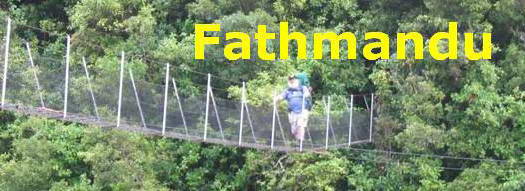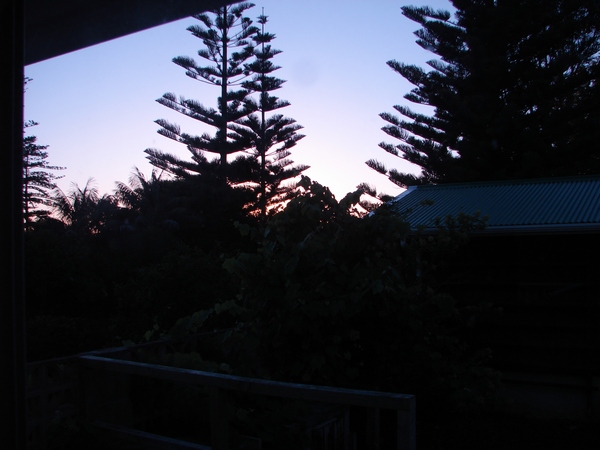
In the morning, I am up at 5.30am. After all it's 7am in New Zealand right now. Bonny is more accustomed to local time and I don't see her for another couple of hours. But outside, with the sun getting up out back behind the Norfolk pines, everything is still.
A line from The Road to Mandalay crosses my mind, about the dawn coming up like thunder. No, sir. Not this place. I take my tea and toast out to the deck and watch it all happen.
In the big pines near the gate there are a couple of kingfishers and a wonderful red and blue parakeet. Local gardeners aren't so keen on the last as they are prime fruit burglars. If I'm still, they will come down and walk around on the lawn.
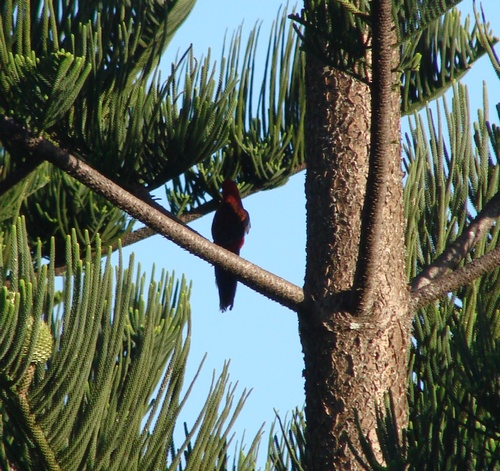
I take my empty plate and cup inside and have a look for something to read. I locate the cookery books. The Tui Flower authorship of one gives the general date but they go back even further.
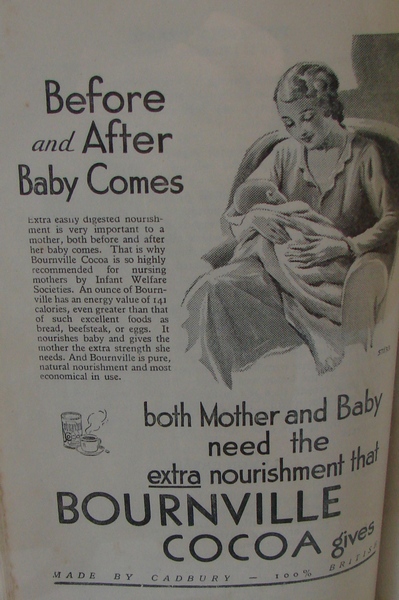
There are several locally produced recipe books, and the Rotary one I buy for myself at the Tourist Information Centre contains a recipe contributed by Bonny's dad.
With my eye for the unusual, my attention is grabbed by the word pilhi, pronounced, according to Bonny, later, as pill-high. A pilhi is a baked dish, with any of a variety of ingredients, but mostly a mixed kumara/coconut or a banana base.
(Bananas go locally as "plun" - possibly derived from the same English word that gives us "plum pudding" without a plum in sight. It's a word in old English that means approximately "fruit" or dried fruit.)
When I arrived back in New Zealand, I called at a vegetable shop on the way home where there were a quantity of very ripe bananas on special. I grabbed them and made a banana pilhi for dinner the next night. It consists of half a dozen or so mashed bananas with the addition of half a cup of flour, half a teaspoon of baking powder and the same of salt. These are combined and baked in an open dish at 180C for about an hour. In Norfolk this is eaten as a vegetable accompaniment to, say, roast pork. The taste reminded me a little of the bread and butter puddings I enjoyed as a child. Being me, I shall fiddle with it a little. The next one I do, I shall add a handful of sultanas and see what happens. Very nice, and very simple.
Bonny emerges, and after breakfast and a bit of a tidy we join a group of Bonny's friends for Sunday coffee, another ritual, and I was happy to just sit and listen. There are a bunch of cafes, and they do coffee very well. After lunch, we set out for Mt Pitt and a bit of a tiki tour. This pic is looking South East to Steel Point. The abiding presence of the Norfolk pine is obvious.
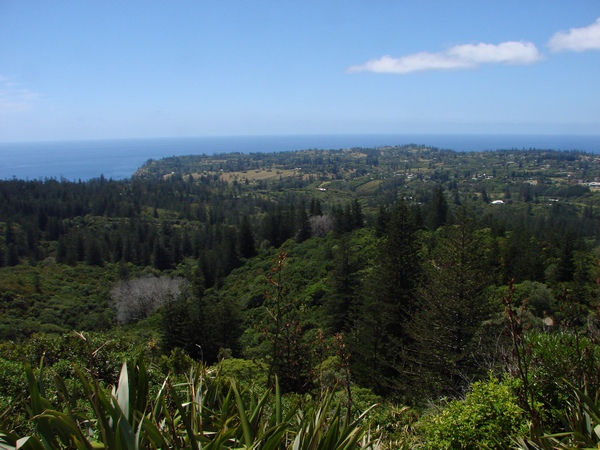
Further west we look out across the airstrip to Philip Island, which, I am told, has lost an "l" along the way, It was on Philip Island that a small shrub, a native abutilon, was rediscovered after being supposedly extinct since 1913. It has since been re-established up here in the Norfolk Island National Park.
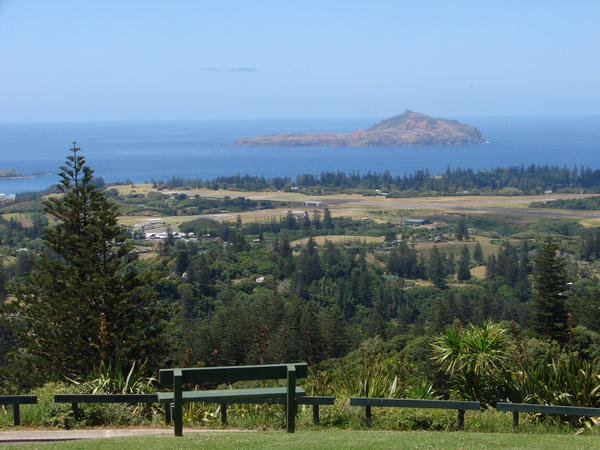
Further north we look out towards Anson Bay
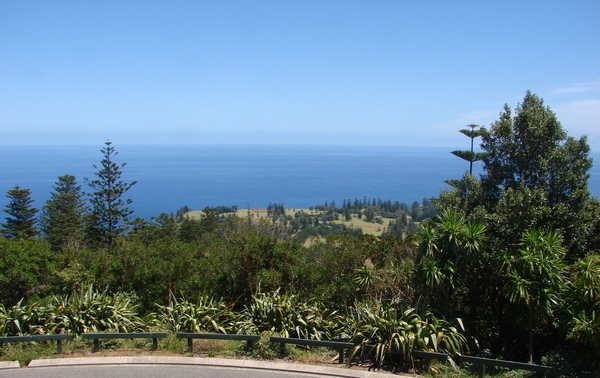
and North East to the horizon
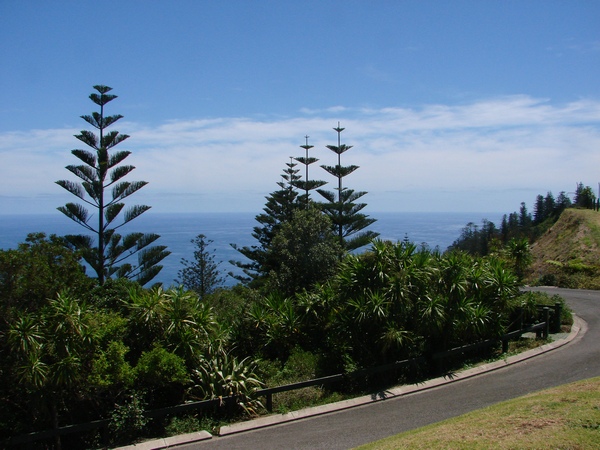
And here I get my first beginning understanding of the "difference" that is Norfolk Island. This is a cabbage tree, no?
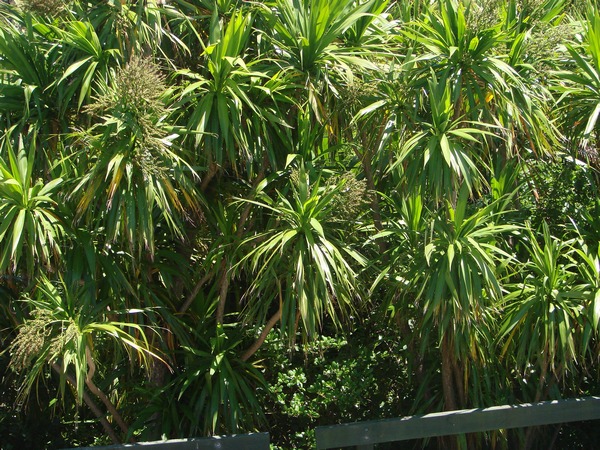
No!
Same genus. Different species. Leaves a little softer, a little wider for their length, berries a little more rampant. It's the Norfolk Island breadfruit. This subtle difference is one I will pick up and follow into other areas when I come back here on Friday to have a look at some of the excellent walking tracks in the Park.
On the way back, we stop for a wander around the Botanical Gardens. It's more like a short trip into the Waitakeres. Quoting from http://www.environment.gov.au/parks/norfolk/visitor-activities/botanic.html
The original garden was owned by Mrs. Pat Moore and covered 0.6 ha. Mrs. Moore (nee Annie Eliza Kirkpatrick) moved to Norfolk Island from New Zealand in 1949. She purchased the property and organised for the land to be cleared of tobacco, weeds and fallen tree trunks. She also began work on installing tracks to provide access to the bottom of the valley. As Mrs. Moore developed the garden, she planted numerous species of plants found only on Norfolk Island. And so began the collection which was to become the basis for the Norfolk Island Botanic Garden. Before she returned to New Zealand in 1975, Mrs. Moore ensured that her hard work, dedication and vision would not be lost to future generations of Norfolk Island residents and visitors, by making it possible for the Norfolk Island Administration to take over the management of the area, which was declared as a Flora and Fauna Conservation Area.
Since the declaration of the Botanic Garden in 1986, it has been managed under the National Parks and Wildlife Conservation ACT (1975) and subsequently under the Environment Protection and Biodiversity Act (1999). In 1993 a further 4.9 ha of remnant rainforest was purchased and added to the Gardens.
This is still very much a work in hand.
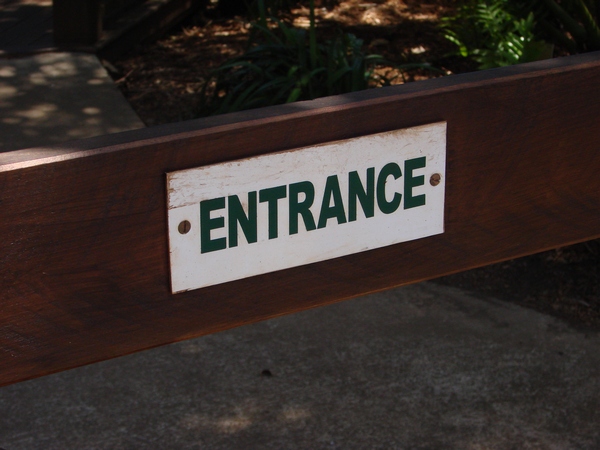
Construction of the walking tracks involves a good deal of solidly-put-together boardwalk with seats at regular intervals. Walking tracks are geared to the needs of the mostly senior age group visiting the island.
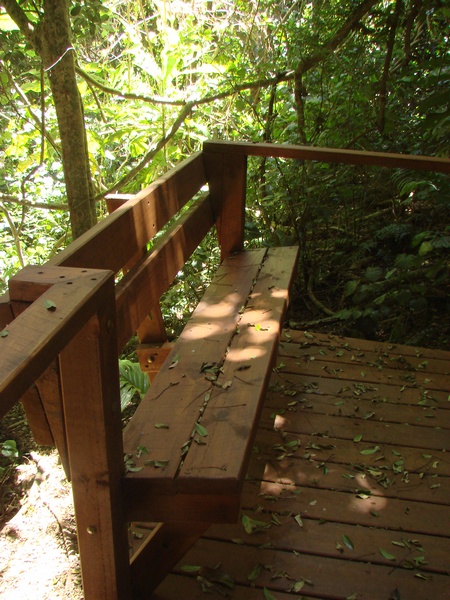
and now and again I get a glimpse of a spirit our own ARC Parks Dept would recognise:

Notice the fastenings are not nails, they are screws. This has been put together carefully and thoughtfully. Even the existing trees have mostly been accommodated.
Information boards are helpful, but more plentiful on the short track near the top. Down below it's pretty much all been construction ahead of information, and that's just a matter of time to sort.
Here's the Norfolk Island euphorbia. Hard to conceive when it's right there in front of you, but there are only a few dozen of these, perhaps a hundred or so, remaining in the wild. That's an experience we will have a number of times.
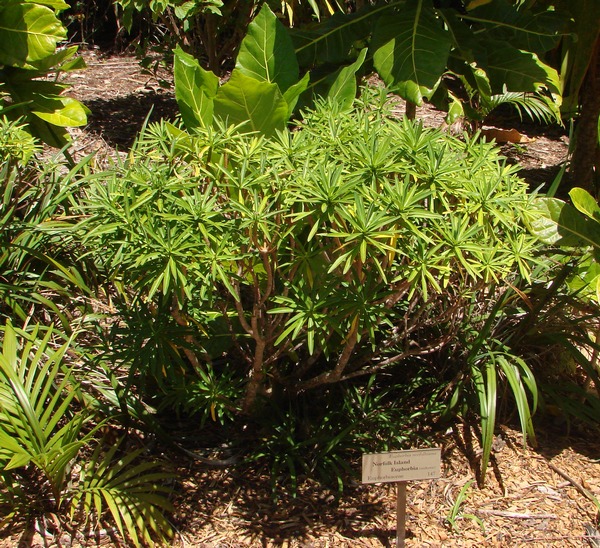
This one makes a supplejack thicket look like a vicarage teaparty
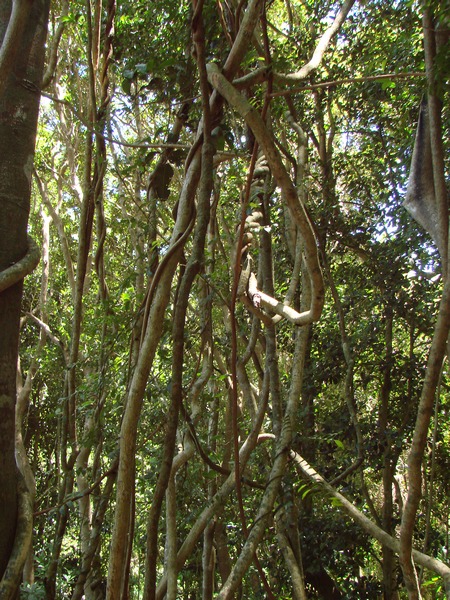
Ouch!
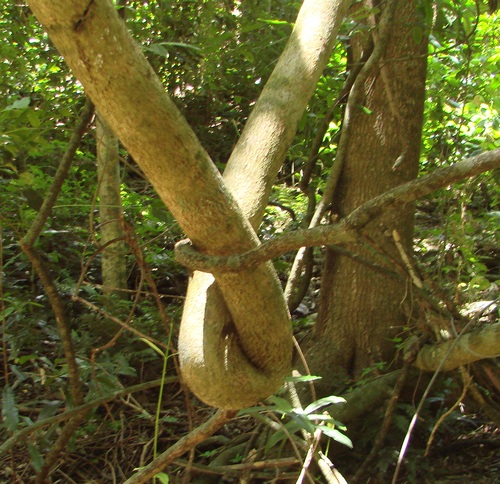
Bonny is in training for the colour emphasis spot in future Fathmandu expeditions. And once again you can see the kind of care that has gone into the track design.
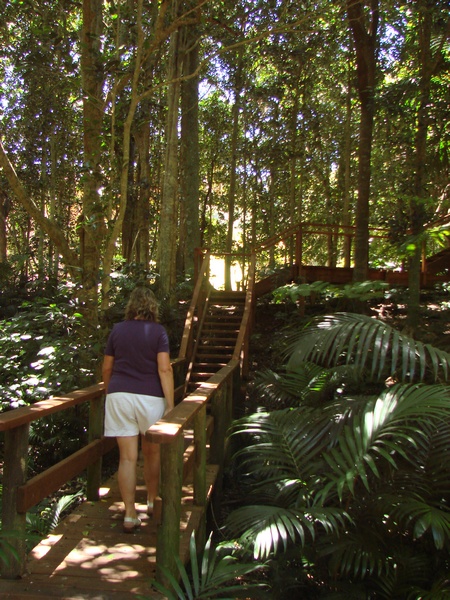
We head on up to the top and back to the car. This is an ideal walk for the middle of the day - shady and cool.
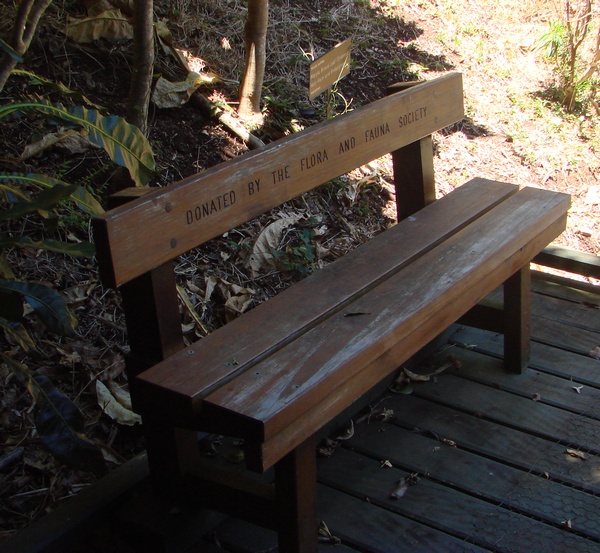
For a community the size of Norfolk Is, it is richly endowed with community organisations of one sort or another.

I wonder what the history of this piece of signage is.
Home again and it's off to Emily Bay.
Monday, and Bonny heads down to the school for a couple of hours where she is a volunteer helper. I take the car and head down to Burnt Pine to investigate the shops. A good many of them are dedicated specifically to tourism
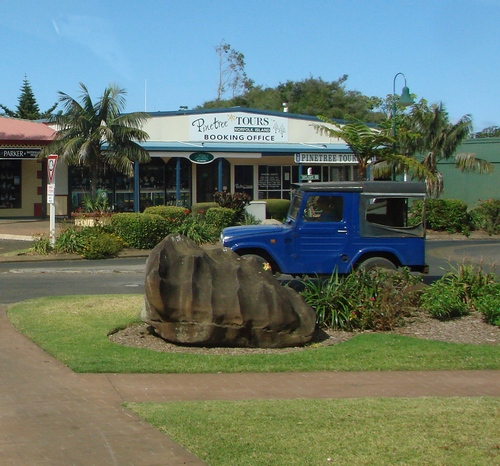
in one way or another.
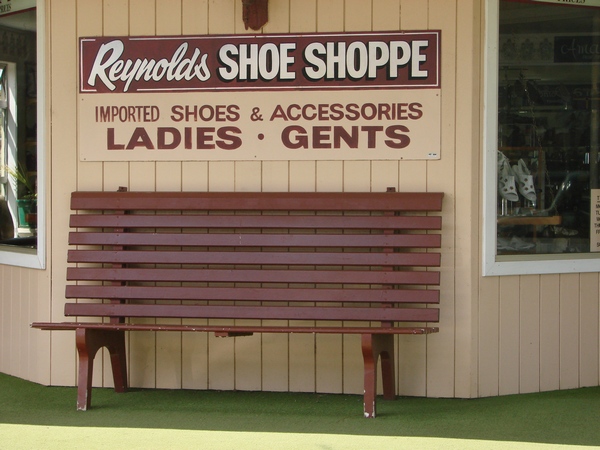
Another slightly olde-worlde approach to marketing.
In the absence of a manufacturing base, pretty well everything in the Norfolk shops will be imported. I was tempted to put my head inside to see whether the sales assistants were wearing black dresses with white lacy necklines like the ones in Duthies when I was a boy in Waiuku.
Duty-free shopping on Norfolk is among the best value around.
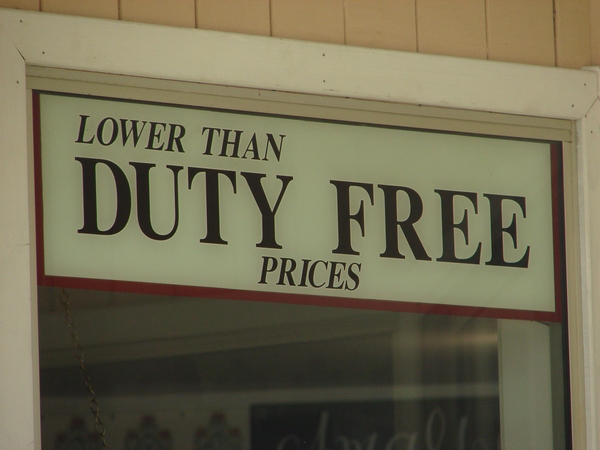
I called at the mall stationery shop on the way back for my regulation Norfolk Island tourist tea towel and a couple of fridge magnets, then headed home to see the loaf of bread I'd been making through its final phases.
A snoozy middle of the day, and down to Emily Bay again. The tide is just about dead low. You are looking at the Lone Pine, one of a few named trees on the island.
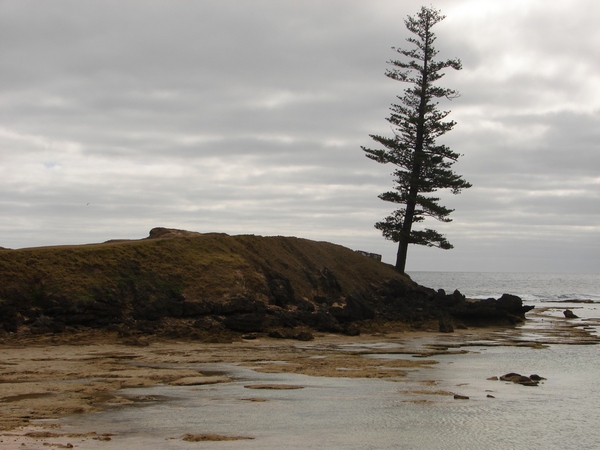
"
